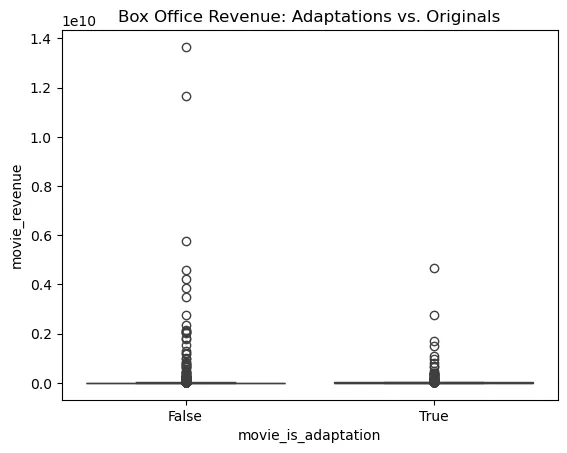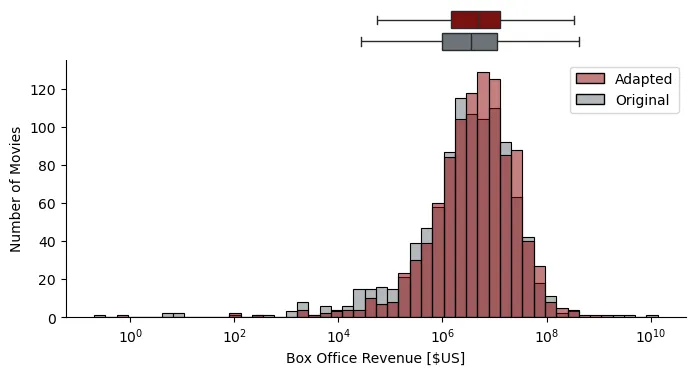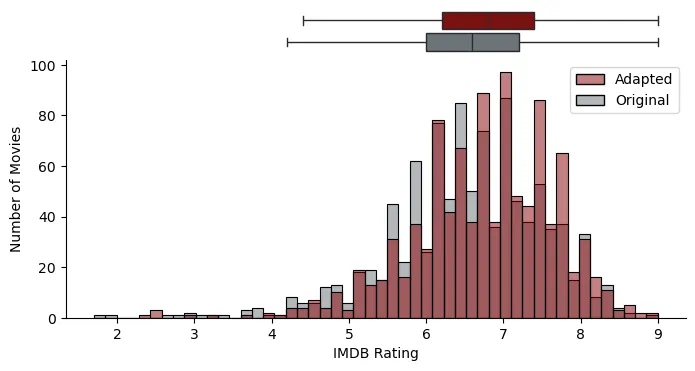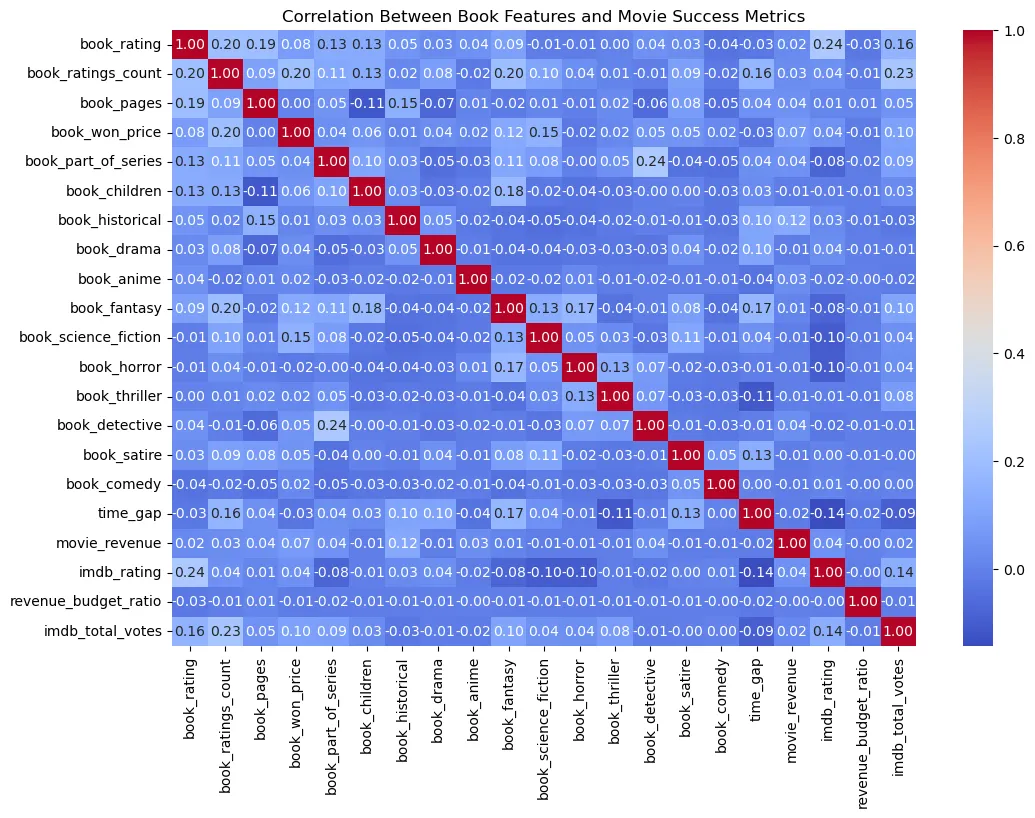The Grand Premiere
The Grand Premiere: Measuring the Success of Adaptations
Picture this: a theater buzzing with anticipation, the lights dimming, and the screen illuminating a tale born not on the silver screen but in the pages of a beloved book. The journey from book to film is fraught with expectations—can an adaptation honor its source while captivating new audiences?
In this act, we explore how adaptations fare against original movies, what drives their success, and the hidden nuances behind the numbers.
The Battle for the Spotlight
The Box Office: Hits and Misses
When it comes to box office revenue, adaptations and original movies seem to share the same stage. Our t-test results reveal no significant difference (p-value = 0.24) between the two.
However, the story isn’t so simple.

Movies like Harry Potter and the Sorcerer’s Stone or The Hunger Games brought millions to theaters, proving the financial muscle of adaptations. Yet, adaptations also tend to play it safe, as evidenced by the revenue distribution:

The data suggests fewer extreme failures among adaptations, though they rarely dominate the upper box office stratosphere.
Critics and Audiences: A Clear Advantage
If adaptations don’t always win at the box office, they often succeed where it matters most—critical acclaim.
Our analysis reveals a consistent 0.20-point boost in IMDb ratings for book-to-movie adaptations (p-value < 0.001). Adaptations of classics like The Lord of the Rings or To Kill a Mockingbird remind us how powerful a strong foundation can be.

The rating distribution further highlights this advantage:

While original movies see more variability—spanning from groundbreaking to forgettable—adaptations are consistently clustered at higher ratings.
Behind the Curtain: Confounding Variables
The relationship between adaptations and success isn’t as straightforward as it seems. Hidden forces—confounding variables—influence the outcome:
Genre Bias: Adaptations are often skewed towards genres like fantasy (The Hobbit) and detective stories (Sherlock Holmes), which tend to perform well.
Fantasy books correlate with box office success (0.17), while detective stories thrive when part of a series (0.24).
Budget Advantage: Movies based on books often receive larger budgets (The Twilight Saga), naturally boosting production quality and marketing reach.
Time Gap: The timing of adaptations also matters. Does releasing a movie decades after a book fuels nostalgia, or does it miss its audience? The data shows minimal impact of the time gap (correlation ~ -0.02).

These findings emphasize that adaptations thrive not just on their literary roots but also on external factors—budget, genre appeal, and timing.
Predicting the Magic: Is There a Formula?
We tested whether a book’s characteristics—ratings, pages, awards—could predict box office success. The answer? Success remains an elusive art.
Our regression model yielded a disappointing R² score of -0.05, proving that book features alone cannot foretell financial performance.
In short, not every bestseller becomes The Godfather. A brilliant adaptation requires the careful orchestration of storytelling, direction, and cultural relevance.
A Standing Ovation
Ultimately, adaptations may not always deliver record-breaking box office revenues, but they earn something equally valuable: audience trust and critical acclaim. Our findings reveal a consistent 0.17–0.20 point edge in IMDb ratings for adaptations.
The secret lies in the delicate balance of faithfulness and reimagination. From Frodo’s journey across Middle-earth to the harrowing tale of Schindler’s List, the best adaptations breathe new life into familiar stories while respecting their roots.
When the curtains fall, successful adaptations remind us of the timeless magic of storytelling—whether written or visual.